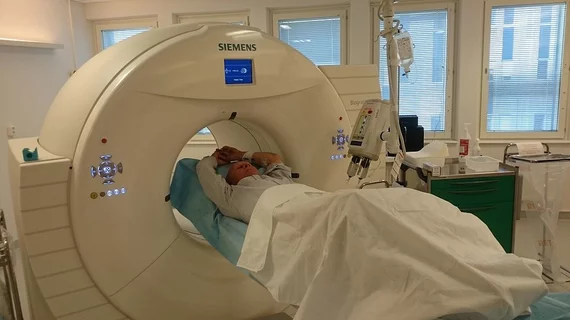A new study published in Blood Advances discusses the prognostic benefits of PET/CT in patients with newly diagnosed multiple myeloma.
The study, which followed 195 patients who had been recently diagnosed with multiple myeloma (MM), found that a negative PET/CT scan six months after diagnosis and induction therapy was linked with improved survival. The authors also noted a correlation between negative 18F-fluorodeoxyglucose (FDG) PET/CT scans and increased intervals of time in between treatments.
“PET/CT relies on the combination of morphologic information provided by CT and the functional metabolic information provided by PET,” corresponding author Shaji K. Kumar, of the Division of Hematology at Mayo Clinic, and co-authors explained. “The CT component determines the presence of lytic lesions, generalized osteopenia, fractures, and extramedullary extension of disease. The PET component highlights the metabolic activity of each lesion and, thus, helps to adjudicate the initial extent of bone marrow involvement and the response to therapy, because lytic lesions can remain stable for prolonged periods, despite a good response to treatment.”
Researchers retrospectively analyzed cases in which patients with newly diagnosed MM had both a baseline PET/CT and a follow-up scan approximately six months later. Hematologic responses were measured in terms of time to next treatment (TTNT) and overall survival (OS).
Negative scans were defined as “the disappearance of every area of increased FDG uptake found at baseline, or a decrease in uptake to less than mediastinal blood pool activity, or a decrease in metabolic activity to less than that of surrounding normal tissue.” Scans that identified lesions that had not disappeared completely were considered “positive.”
For the entire lot of patients, the median TTNT and OS was 24.6 and 79 months. The authors noted these metrics were significantly prolonged in the group of patients with negative scans compared to the others, at 55.2 vs 17.8 months for TTNT and unreached vs 60.8 months for OS.
These results remained consistent when the experts conducted a multivariate analysis that accounted for additional known risk factors of the patients.
“We demonstrate that PET/CT could be incorporated into the posttreatment evaluation of patients with newly diagnosed MM, because it adds crucial prognostic information to the biochemical assessment,” the authors concluded.
Related PET/CT news:
Total-body PET scanner detects cancer in 60 seconds
Combination therapy that includes new radionuclide proves effective for metastatic prostate cancer

